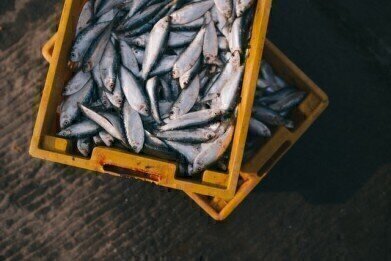Mass Spectrometry & Spectroscopy
4 Types of Food Fraud
Jul 19 2022
From diluting premium ingredients with inferior alternatives to deliberately mislabelling products for economic gain, food fraud is an issue faced by economies around the world. In the EU alone, the European Commission estimates economically motivated food adulteration costs the economy around €8 to €12 billion every year. Not only does food fraud drain profits and damage the reputation of the industry, but it can be a major public health risk when toxic ingredients or unidentified allergens fly under the radar.
Defining food fraud
The Knowledge Centre for Food Fraud and Quality (KC-FFQ) operated by the European Commission defines food fraud as the following:
“Any deliberate action of businesses or individuals to deceive others in regards to the integrity of food to gain undue advantage. Types of food fraud include but not limited to: adulteration, substitution, dilution, tampering, simulation, counterfeiting, and misrepresentation.”
Below, we take a closer look at the different types of food fraud.
-
Dilution
High value ingredients are diluted with inferior alternatives. For example, 100% orange juice is diluted with water to increase yield and profits. This defies laws enforced by the European Commission, which state “nothing of lesser economic value must be added, or removed if it is of higher economic value”.
-
Substitution
High value ingredients are replaced with inferior alternatives. This is common in the seafood industry, where high value species such as cod, halibut, sea bass, snapper, sole and tuna are often substituted with cheaper alternatives.
This also meets the European Commission definition of food fraud, which states “if food is misdescribed, i.e. the information about origin, composition, etc provided to customers is not true and if this misdescription is done with the intention to deceive the customer for financial gain, food fraud - also known as economically motivated adulteration - is committed.”
-
Concealment
Underhand techniques are used to conceal the low quality of an ingredient or product. For example, poultry may be injected with antibiotics to mask disease and reduce bacterial load during quality testing. Using colouring agents to enhance the appearance of inferior fruit and vegetables is another example of food fraud concealment.
-
Mislabelling
Deliberately mislabelling products for financial gain is one of the most common examples of food fraud. The horse meat scandal of 2013 that saw products such as beef lasagne adulterated with horse meet and deliberately mislabelled, is an example of this type of food fraud.
These are just some examples of the types of food fraud faced by the industry. Foodomics, a discipline that uses advanced analytical techniques to profile samples and track crimes back to the source, plays a critical role in fighting food fraud. Find out more in ‘A Complete Guide to Food Fraud & Foodomics’. Or read 'Accurate Testing Keeps Farm Animals Healthy' to discover the importance of testing on animals at the very start of the food production chain.
Digital Edition
Lab Asia 31.2 April 2024
April 2024
In This Edition Chromatography Articles - Approaches to troubleshooting an SPE method for the analysis of oligonucleotides (pt i) - High-precision liquid flow processes demand full fluidic c...
View all digital editions
Events
Apr 28 2024 Montreal, Quebec, Canada
May 05 2024 Seville, Spain
InformEx Zone at CPhl North America
May 07 2024 Pennsylvania, PA, USA
May 14 2024 Oklahoma City, OK, USA
May 15 2024 Birmingham, UK


















